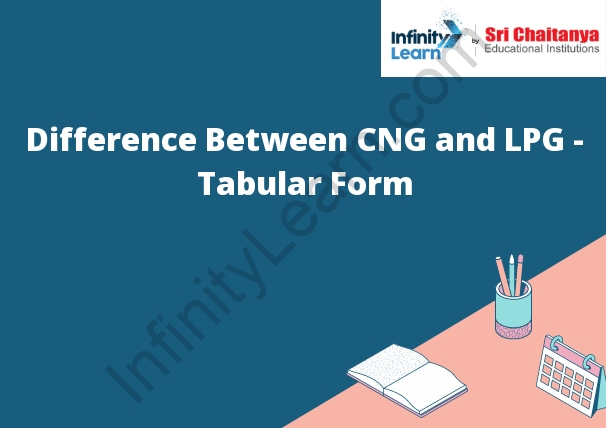Table of Contents
Introduction to CNG and LPG
Difference Between CNG and LPG – Tabular Form: CNG and LPG are both types of fuel. CNG is compressed natural gas and LPG is liquefied petroleum gas. Both are used as alternatives to gasoline. CNG is compressed to a much higher pressure than LPG. This makes it a better fuel for cars because it packs more energy into a smaller space.

What is CNG?
- CNG is a compressed natural gas that is used as an alternative fuel to gasoline and diesel. It is made up of mostly methane and is a much cleaner burning fuel than gasoline.
- CNG is compressed natural gas, a fuel made of methane that is compressed and stored in cylinders. It is a relatively new fuel, first introduced to the market in the early 1990s. CNG is a cleaner-burning fuel than gasoline, emitting about 25% less CO2. It also costs less than gasoline, making it an attractive option for cost-conscious drivers.
- There are a few downsides to CNG. First, the infrastructure for CNG fueling is not as developed as gasoline infrastructure, so finding a place to fill up can be difficult. Second, CNG vehicles cost more to purchase than gasoline vehicles. And finally, CNG vehicles have a shorter range than gasoline vehicles and take longer to refuel.
- Despite these downsides, CNG is a promising alternative fuel with a lot of potential. With continued development, it could become a more widely-used fuel option, helping to reduce emissions and save drivers money.
What is LPG?
- LPG is a liquefied petroleum gas, which is a mixture of propane and butane. It is used as a fuel for heating and cooking, and is also often used in cars.
- Liquefied Petroleum Gas (LPG) is a hydrocarbon gas mixture consisting mainly of propane and butane. It is a flammable gas that is used as a fuel in heating appliances, vehicles, and cookers. LPG is also known as autogas, GPL, and LP gas.
- LPG is produced during the refining of crude oil and natural gas. It is also a by-product of the petrochemical industry. LPG is stored in pressurized containers, and is used as a fuel for heating appliances and vehicles.
- LPG is a clean-burning fuel, and it is less polluting than other fuels such as petrol and diesel. It is also a cheaper fuel than petrol and diesel. LPG is used in heating appliances, vehicles, and cookers.
Difference Between CNG and LPG
CNG is a compressed natural gas and it is a fossil fuel. It is made of methane and it is a non-renewable resource. LPG is a liquefied petroleum gas and it is made of propane and butane. It is a fossil fuel and it is a non-renewable resource.
There are many differences between CNG and LPG. The most significant difference is that CNG is a compressed natural gas while LPG is a liquefied petroleum gas. CNG is mainly composed of methane, while LPG is a mixture of propane and butane. CNG is a cleaner-burning fuel than LPG, which can produce pollutants like nitrogen oxides and sulfur dioxide. CNG is also more efficient than LPG, providing more miles per gallon. LPG is more expensive than CNG, and it is not as widely available.
Environmental Safety
- This is an excerpt from the Environmental Protection Agency website.
- “The U.S. Environmental Protection Agency (EPA) is responsible for protecting human health and the environment. EPA’s mission is to protect human health and the environment. Its goals are to ensure that all Americans are protected from significant risks to human health and the environment and that national efforts to reduce environmental risk are based on the best available science.”
- The website also includes a section on climate change, which discusses the EPA’s efforts to reduce greenhouse gas emissions.
CNG vs LPG
There are many differences between CNG and LPG. LPG is a fossil fuel, whereas CNG is a cleaner-burning alternative fuel made from natural gas. LPG is heavier than air and can pool in low-lying areas, creating a fire hazard, whereas CNG is lighter than air and dissipates quickly. LPG is also a source of carbon monoxide, whereas CNG does not produce this harmful gas.
Calorific Values of LPG and CNG
The calorific value of LPG is higher than that of CNG. LPG has a calorific value of approximately 35,000 kJ/kg, while CNG has a calorific value of approximately 28,000 kJ/kg.
Cost of CNG vs LPG
The cost of CNG and LPG varies depending on the region. However, CNG is usually cheaper than LPG.
Advantages of Both CNG and LPG
- Both CNG and LPG have a number of advantages.
- CNG is cheaper than gasoline, and it produces less pollution.
- LPG is also cheaper than gasoline, and it is more efficient than gasoline.









